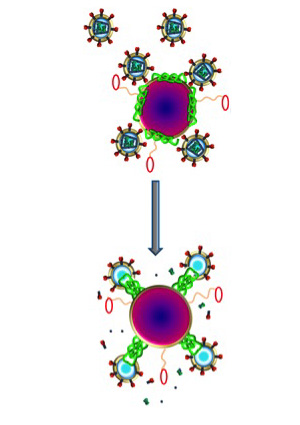Each day, almost 7,000 people contract HIV around the world. Many scientists have dedicated their entire lives to finding a cure for this virus and it seems that we have come one step closer to finding that cure. With a historical discovery coming out of Washington University, that number could soon be reduced to zero.
Researchers at Washington University School of Medicine in St. Louis have found that bee venom can effectively poke holes in the envelope surrounding the HIV virus and kill it. The potent toxin contained within bee venom is called melittin.
Nanoparticles, when infused with the toxin, can filter HIV through it’s surface and destroy it, while leaving normal cells unharmed due to their much larger size. When nanoparticles come into contact with normal cells, they simply bounce off. Joshua L. Hood, MD, PhD, explained, “The melittin forms little pore-like attack complexes and ruptures the envelope, stripping it off the virus.” The virus has to have a protective coat and there is no way for the virus to adapt when its essential physical property is under attack.

Image displays nanoparticles (purple) infused with melittin (green), with molecular bumpers (small red ovals) allowing them to bounce off of normal body cells. Fuse with HIV (small spiked circles) and destroy their envelope.
Photo credit: Joshua L. Hood, MD, PhD.
The following video by the Huffington Post further explains this topic.
There is promising evidence that HIV infection in children will be eliminated. A baby born with HIV in Mississippi has apparently been cured. Its mother was diagnosed with HIV during labor, and the baby received intense care just after 30 hours of birth. This child shows no sign of the virus today.
Most anti-HIV drugs inhibit the virus’s ability to replicate, while doing nothing to stop initial infection. The development of a vaginal gel is the new revelation to prevent the spread of HIV, and in addition, an intravenous treatment to help those already infected and clear HIV from the blood stream.




